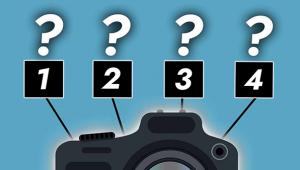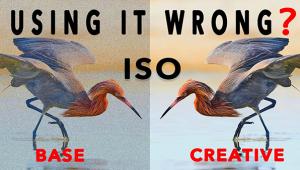Microtek’s ScanMaker i800 Pro Design; A Fully Loaded Legal-Size Flat-Bed Film & Print Scanner Page 2
After digging deep into my black and white film files I came up with a varied selection of subjects made on different kinds of film, each developed somewhat differently as well. Switching film holders, I found the gripping tension designed to keep the film stretched tight in the holder quite effective, though if not set just right it could push and pull the film too much and make it buckle. But I soon got the feel of the holders with different black and white films with varying thickness, so I could begin the scanning. In the past I had found I could obtain the best control of final image values from a scan by making a raw 16-bit grayscale file with the scanner software set to record a positive, which would result in a file that was a negative image. I would then use Levels and Curves in small steps of adjustment before and after inverting the image from a negative to a positive. This method produced a smoother transition and gradation of tones that was more linear than I would get using the scanner driver to do the conversion from a negative on film to a positive, adjusted digital scan image.
 |
|
|
 |
|
|
However, with new hardware and a new version of SilverFast I was compelled to begin my black and white film scanning using SilverFast's NegaFix to make my first scans. I was pleasantly surprised when I obtained a well adjusted and smooth progression of tone, which reproduced the black and white image in a positive displayed in the preview window. This pleasant surprise was confirmed after I made my first batch of black and white scans when I opened them with Photoshop to do any tweaking necessary, which was minimal, and then set to the arduous task of cleaning up any spots from dust or scratches. Sadly, neither Digital ICE nor SilverFast's SRD is of little or no value because they cannot readily distinguish between the film grain and a dust spot. So, "spotting" black and white scans is still a manual piece of drudgery.
 |
|
|
 |
|
|
Evaluation And Recommendation
Everything in the way of photo images I threw at the Microtek ScanMaker i800
Pro Design came back as at least good scan files or better, something I can't
say for many much more expensive scanners I have used in the past. But harking
back to my opening argument that software is as essential to getting good scans
as hardware, how do my good results come from using the right software? I wish
I could say it proved my point, but then you have to consider the old saw, it
takes two to tango, and if you remove one or the other of the dance partners
nothing results. All I can say for sure from my experience with the i800 Pro
Design is that SilverFast Ai 6 and this scanner do dance well together.
Over the past few years of testing and reporting on scanners of all kinds one
trend has been very evident: prices have plummeted and performance has shot
up. I sure wish a lot more things in this world had such positive price/value
scenarios. At $549 for a "pro" quality scanner, the price is surely
moderate compared to anything in the past, but still not as affordable as the
basic i800 package. Is it really worth going the Pro Design route? The answer
to that is in your needs and requirements and whether you will take advantage
of all the tools this model puts at your disposal. If the answer to that is
yes, then the cost of the i800 Pro Design is worth it.
 |
|
|
For more information, contact Microtek, 16941 Keegan Ave., Carson, CA 90746; (310) 687-5940; www.microtekusa.com.
For a full list of Technical Specifications, visit the Instant Links section of our website at: www.shutterbug.com/currentissuelinks/
- Log in or register to post comments

































